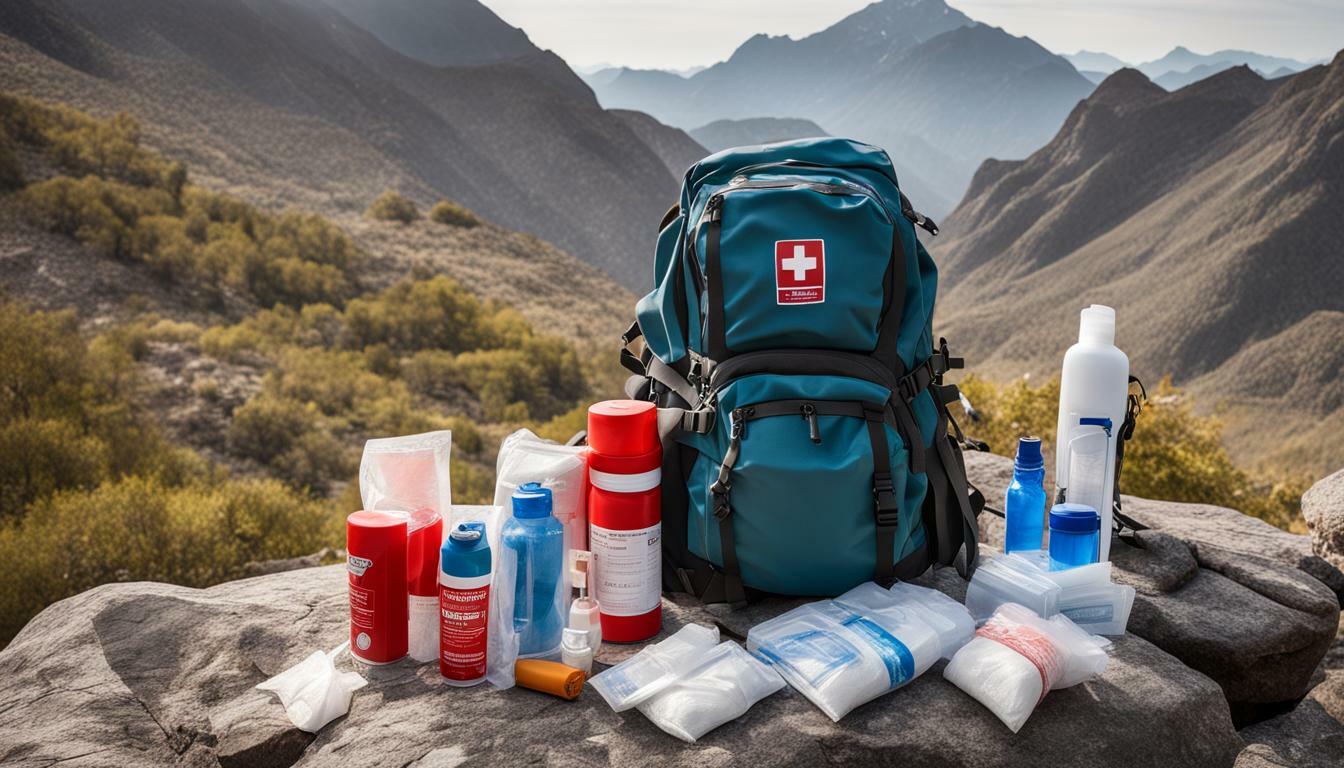As a landscape photographer, venturing into the great outdoors to capture stunning images is a thrilling experience. However, while the beauty of nature is awe-inspiring, it can also be dangerous, and accidents can happen, leaving you vulnerable and unprepared. As a result, it is essential to have the appropriate first aid supplies on hand to ensure your safety and to capture images without unnecessary risks.
Specialized first aid kits designed for outdoor photography can help photographers feel confident about their safety, and they can be customized to address specific needs and challenges. These kits come with supplies such as CPR masks, survival blankets, and first aid manuals that can help in emergencies and unusual situations. However, before you embark on your next landscape photography expedition, it is essential to understand the importance of prioritizing safety and packing the appropriate first aid supplies.
Key Takeaways:
- First aid kits are essential for landscape photography expeditions to ensure safety and preparedness.
- Specialized first aid supplies designed for outdoor photography can address specific needs and challenges.
- Prioritizing safety by packing appropriate first aid supplies can enhance the photography experience without unnecessary risks.
Essential First Aid Items for Outdoor Photography
When heading out on a landscape photography expedition, it’s important to pack a first aid kit specifically tailored to the challenges of the great outdoors. Here are some essential first aid items that every outdoor photographer should have in their kit:
| Item | Purpose |
|---|---|
| Adhesive bandages | To cover and protect small cuts and scrapes |
| Antiseptic wipes | To clean and disinfect wounds |
| Tweezers | To remove splinters, thorns, or ticks |
| Blister pads | To alleviate the discomfort of blisters |
| Gauze pads and adhesive tape | To dress larger wounds |
| Instant cold compress | To relieve pain and swelling from injuries |
| Aspirin or ibuprofen | To alleviate pain and reduce inflammation |
These items can help treat common outdoor injuries such as cuts, scrapes, blisters, and insect bites. It’s important to pack enough of each item to last the duration of your trip, as well as extra supplies in case of accidents or emergencies.
Aside from the essentials, consider adding items like a snake bite kit, a CPR mask, or a trauma shears to your kit. These can be particularly useful for photographers venturing into remote or wilderness areas.
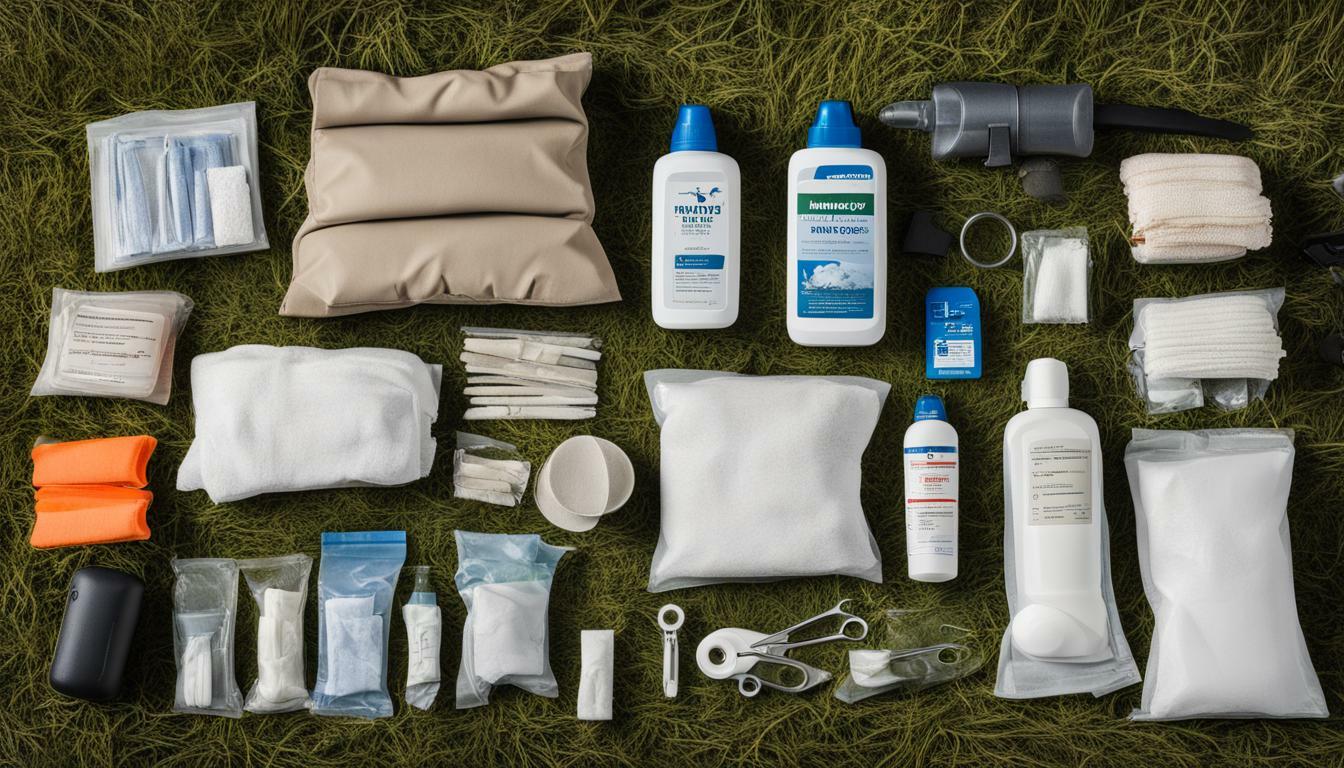
By packing a well-stocked and comprehensive first aid kit, outdoor photographers can ensure they are prepared for any potential injuries or emergencies that may arise during their expeditions. Remember that safety should always come first when capturing the beauty of the great outdoors.
Wilderness First Aid Kits: A Photographer’s Best Friend
When venturing into the great outdoors, landscape photographers must be prepared for any eventuality. This includes having access to essential first aid supplies that can help in the event of injuries or emergencies. However, standard first aid kits may not include specialized items that outdoor photographers need to address specific types of injuries or deal with remote locations. This is where wilderness first aid kits come in handy.
Emergency medical kits for landscape photographers are designed to be portable, lightweight, and high-quality, making them an ideal choice for photographers seeking adventure in the wilderness. These kits contain a range of medical supplies- both basic and advanced- that can be used in a wide range of situations. These kits are therefore an excellent investment for photographers who want to prioritize safety while capturing stunning images in remote locations.
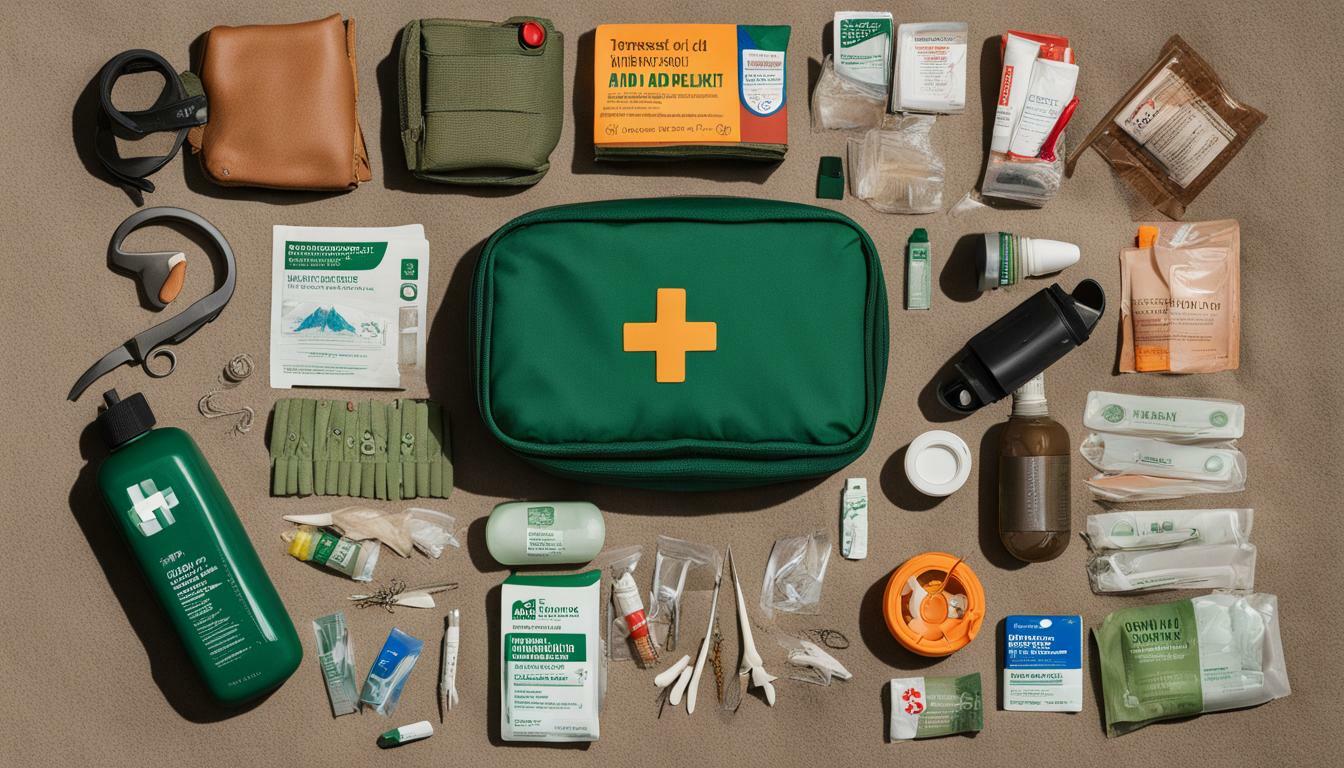
One of the key benefits of wilderness first aid kits is that they come equipped with items that are not typically found in standard first aid kits. For example, they may include tweezers for removing splinters or insect stingers, survival blankets for treating hypothermia, or CPR masks for cardiopulmonary resuscitation. Other features of these specialized kits include trauma shears for cutting clothing to access wounds, and emergency medications like epinephrine for allergic reactions.
The contents of wilderness first aid kits are tailored to the specific needs of outdoor enthusiasts and photographers. Some may include additional items like ice packs for treating injuries, or adhesive bandages specifically designed for blisters and burns. It is important to note that while these emergency medical kits for outdoor photographers can provide crucial assistance in the event of an emergency, they are not a substitute for proper training in basic first aid techniques and wilderness safety.
Outdoor Photography Safety Gear: Ensuring Your Safety During Expeditions
When planning a landscape photography expedition, having the right safety gear can be just as important as packing your camera equipment. Outdoor photography safety gear can help prevent accidents and ensure a comfortable, enjoyable experience in the wilderness. As a photographer, it’s crucial to prioritize safety and make sure you have the right photography expedition safety equipment. Here are some essential items you should consider packing:
| Item | Importance |
|---|---|
| Sturdy footwear | Provides good traction and support for uneven terrain, prevents slips and falls |
| Insect repellent | Protects against insect bites and diseases |
| Sun protection | Prevents sunburn and reduces the risk of skin cancer |
| Appropriate clothing for different weather conditions | Keeps you warm and dry, protects against hypothermia and heat stroke |
It’s also important to consider the environment you’ll be exploring and pack accordingly. For example, if you’ll be hiking through a heavily wooded area, consider wearing long sleeves and pants to protect against scratches and insect bites. If you’ll be trekking through rocky terrain, consider wearing a hiking helmet to protect your head from falling rocks.
When it comes to outdoor photography safety gear, it’s better to be over-prepared than under-prepared. Think about the potential risks of your expedition and pack accordingly. By prioritizing your safety and taking the necessary precautions, you’ll be able to focus on capturing beautiful images while having peace of mind.
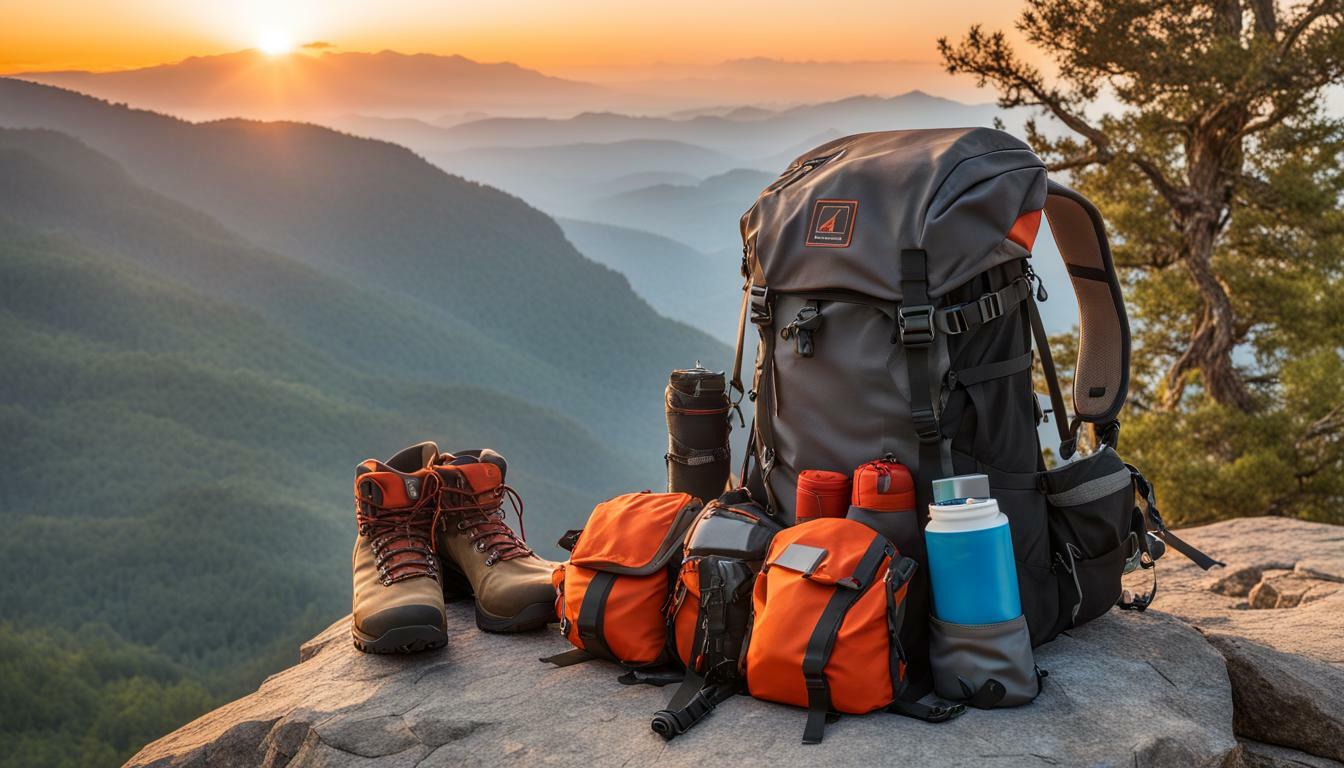
Preparing for Wild Terrains: Tips and Guidelines
When heading out on a landscape photography expedition, it is important to prepare for the challenges of the wilderness. Proper preparation can help ensure a safe and enjoyable experience. Here are some tips and guidelines to consider before embarking on your next adventure:
- Research the location thoroughly, including the terrain, weather conditions, and potential hazards.
- Assess the risks and plan accordingly. Consider factors such as your fitness level, available resources, and the length of your expedition.
- Create a safety plan and communicate it with others in your group. Make sure everyone is aware of the plan and knows what to do in case of an emergency.
- Bring appropriate safety gear, such as a sturdy pair of boots, insect repellent, and sun protection.
- Consider getting basic training in outdoor skills and first aid, such as CPR and wilderness first aid.
- Be mindful of your impact on the environment and follow Leave No Trace principles.
By taking these precautions, you can better prepare for the challenges of the wilderness and minimize the risks of accidents or emergencies. Remember, photography is about capturing the beauty of nature, but safety should always come first.

First Aid Training for Landscape Photographers
When venturing into the great outdoors for landscape photography expeditions, proper preparation is essential to ensure a safe and successful trip. One crucial aspect of this preparation is acquiring first aid training. Knowing how to respond to emergencies in remote locations can make all the difference in ensuring the safety of yourself and your fellow photographers.
Basic first aid knowledge is a valuable skill for anyone spending time in the wilderness. It can help you identify and treat common injuries such as cuts, burns, and sprains, as well as more serious conditions like hypothermia, dehydration, and animal bites. By learning how to administer CPR, use a defibrillator, and control bleeding, you can be better equipped to handle emergencies and potentially save lives.
There are a variety of first aid courses available, ranging from basic first aid to more specialized wilderness first aid training. These courses are designed to provide comprehensive instruction on handling medical emergencies in remote locations and equip you with the skills and knowledge necessary to respond effectively to a range of situations.
Attending a first aid course tailored specifically for outdoor enthusiasts, such as landscape photographers, can be a smart investment. These courses cover topics such as treating hypothermia, altitude sickness, and snake bites, as well as preparing emergency shelters and improvising medical equipment. They can also help you adapt your first aid skills to your specific trip, taking into account factors like location, duration, and group size.
First aid training can also help you feel more confident and prepared when venturing into the wilderness. By knowing what to do in the event of an emergency, you can focus on capturing stunning images of the natural world without unnecessary worry or distraction.
Ultimately, first aid training is a crucial component of any landscape photographer’s safety plan. By investing in this essential skill, you can be better equipped to handle emergencies and keep yourself and your fellow photographers safe during your next photography expedition.
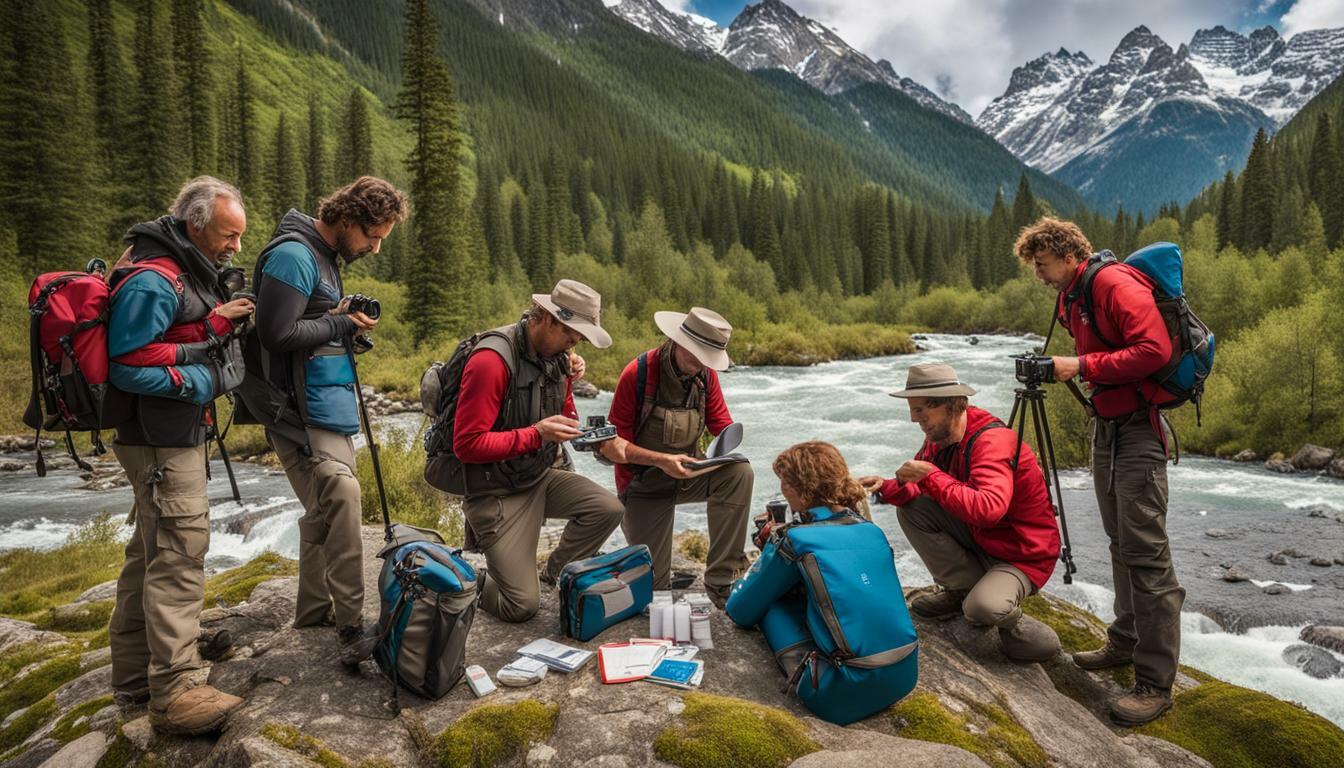
Building Your Custom First Aid Kit
When it comes to landscape photography, first aid supplies are essential for ensuring a safe and successful trip. Putting together a custom first aid kit tailored to your needs can go a long way in preventing and treating injuries during your outdoor photography expeditions. Here are some essential items to consider when building your kit:
| Item | Quantity |
|---|---|
| Adhesive bandages (assorted) | 10-15 |
| Antiseptic wipes | 10-15 |
| Gauze pads | 4-6 |
| Medical tape | 1 roll |
| Tweezers | 1 pair |
| Scissors | 1 pair |
| Blister pads | 5-7 |
| Instant cold packs | 2-3 |
| Disposable gloves | 2 pairs |
Note: This is a basic list of items. Depending on your personal needs and medical history, you may want to add other items such as medications, specific first aid items, or personal protective equipment.
It’s important to keep your first aid supplies organized and easily accessible. Consider using a waterproof and durable case to protect your supplies from moisture and damage. Additionally, label your kit with your name and contact information in case it gets lost or misplaced.
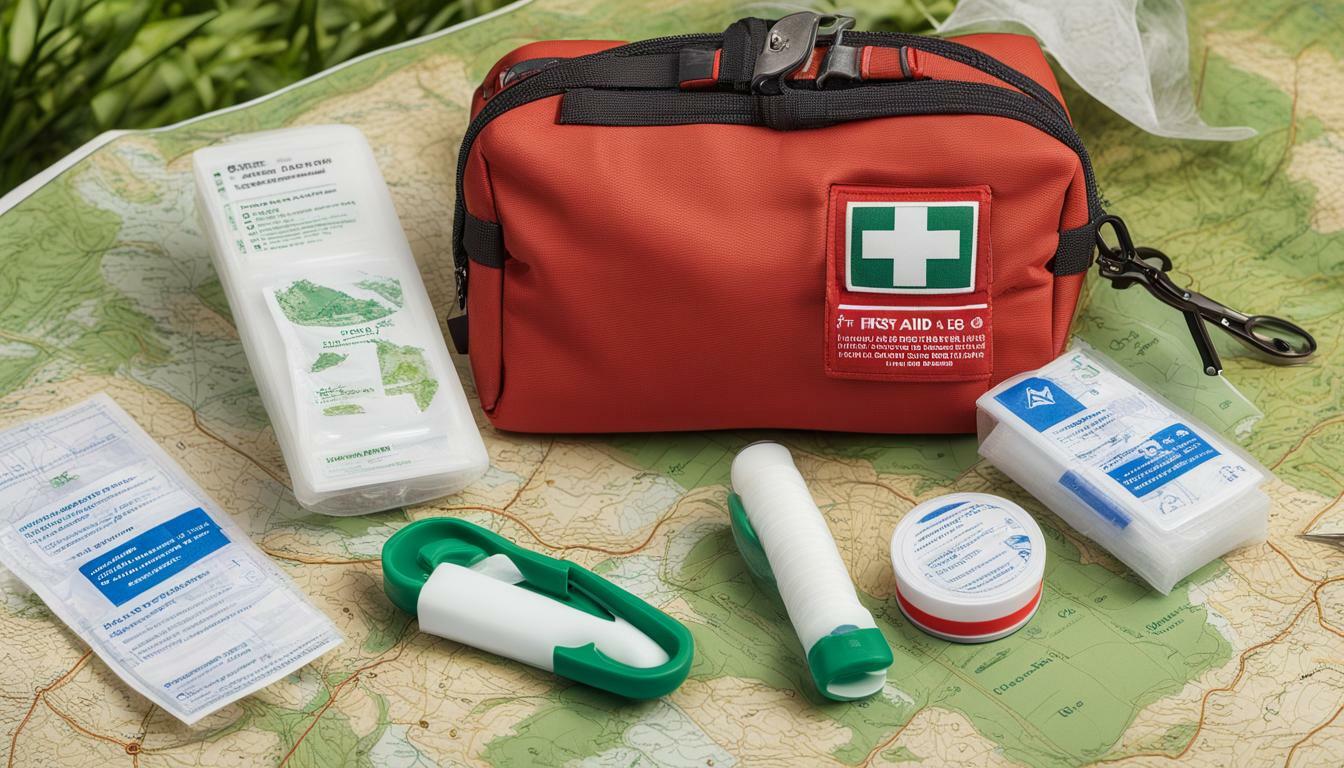
Remember to periodically check your kit and restock items that have been used or have expired. It’s also a good idea to review your first aid skills and knowledge to ensure that you are prepared to handle emergencies in the field. By building and maintaining your own custom first aid kit, you can enjoy your landscape photography expeditions with peace of mind, knowing that you are well equipped to handle any situation that comes your way.
First Aid Kit Maintenance: Keeping Your Supplies Ready
Building a first aid kit for landscape photography expeditions is an essential step in prioritizing safety. However, it is equally important to regularly maintain and restock your kit to ensure that it is always ready to use.
One key aspect of first aid kit maintenance is to check the expiration dates of all supplies. Some items, such as medications and ointments, may lose their effectiveness over time and should be replaced periodically. It is also a good idea to routinely inspect the kit for any damaged or expired items and replace them accordingly.
In addition, it is crucial to keep your first aid kit well-stocked with essential supplies, including bandages, antiseptic wipes, and pain relief medication. If you use any items from your kit, be sure to replace them as soon as possible to ensure that the kit is always fully stocked.

Regularly reviewing your first aid skills and refreshing your training is also an important aspect of first aid kit maintenance. Consider taking a first aid course or refresher training to stay up-to-date on best practices and learn new techniques for treating injuries and emergencies.
By regularly maintaining and restocking your first aid kit, you can ensure that you are always prepared to handle potential injuries and emergencies during your landscape photography expeditions.
Staying Safe on Landscape Photography Expeditions: Real-life Stories
Nothing can prepare you for the unexpected when you’re out in the wilderness, and landscape photographers are no exception. Whether it’s inclement weather, wildlife encounters, or accidents, being prepared with first aid supplies and safety gear can make all the difference in the world. Here are some real-life stories from photographers who have faced challenging situations during their expeditions.
“I was out on a beach at low tide, looking for interesting rock formations when I stumbled on some slippery rocks and fell, hitting my head. I was dizzy and disoriented, and my camera gear was scattered all over the place. Luckily, I had my first aid kit with me and was able to clean up the wound and bandage my head. I took a few deep breaths, composed myself, and got back to shooting,” says John, an avid landscape photographer from Scotland.
John’s story highlights the importance of always carrying a first aid kit, even for seemingly simple outings. A head injury can easily turn into a serious emergency if left untreated.
“I was hiking in a remote mountain area when I realized that I had lost my way. It was getting dark, and I was running low on water and food. I tried to retrace my steps, but the terrain was unfamiliar, and I was getting more and more anxious. I knew I had to stay put and wait for rescue. I had my survival blanket and a whistle, and I used them to signal for help. I was eventually found by a search and rescue team, and I learned my lesson the hard way,” says Sarah, a landscape photographer from Wales.
Sarah’s story highlights the importance of carrying safety gear, such as a survival blanket and whistle, particularly when venturing into unfamiliar terrain.
These stories serve as a reminder that safety should always come first, no matter how experienced or skilled a photographer may be. Being prepared with the right first aid supplies and safety gear can mean the difference between a successful photography expedition and a disaster.
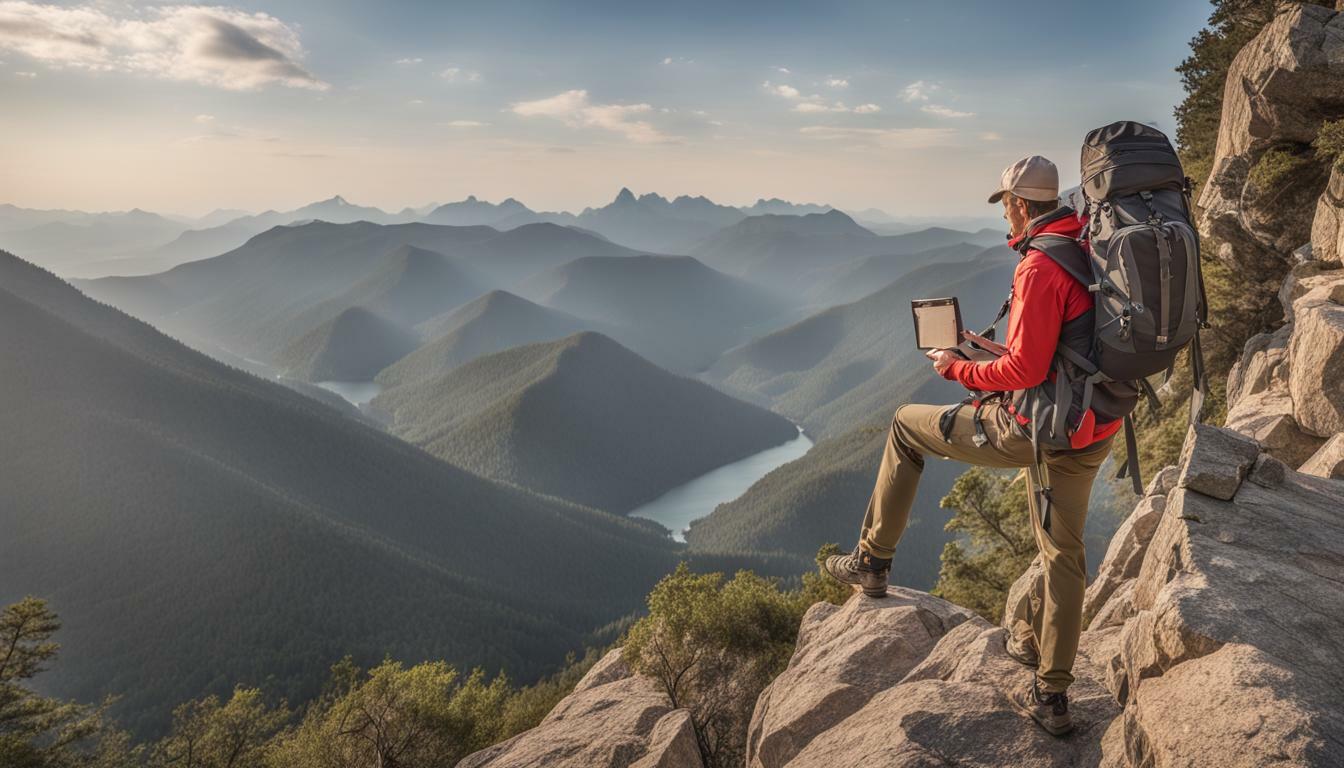
The Importance of Safety in Landscape Photography
When it comes to landscape photography, the focus is often on capturing the beauty of nature. However, it’s important to remember that safety should always come first. Whether you’re exploring a remote wilderness or just visiting a local park, being prepared for potential emergencies is essential.
Investing in a quality first aid kit and proper safety gear can not only ensure your well-being but also enhance your photography experience. By having the right tools and knowledge on hand, you can focus on capturing stunning images without worrying about unnecessary risks.
Additionally, practicing ethical and responsible photography techniques can also contribute to the overall safety of natural environments. By minimizing your impact on the surroundings, you can help preserve the beauty of these locations for generations to come.
Overall, prioritizing safety in landscape photography is crucial for a successful and enjoyable experience. By taking the necessary precautions and respecting the natural surroundings, you can capture breathtaking images while also protecting yourself and the environment.

Conclusion: Safety First for Capturing Beauty
Whether you are a seasoned landscape photographer or just starting out, it is essential to prioritize safety during your outdoor expeditions. Investing in a quality first aid kit, safety gear, and training can ensure that you are prepared for any potential emergencies or accidents. By prioritizing safety, you can enjoy a successful photography experience while minimizing your impact on natural environments.
Remember to Customize Your First Aid Kit
It is important to remember that every outdoor photography expedition presents unique challenges and risks. Therefore, it is essential to personalize your first aid kit to meet your specific needs and preferences. Consider the location, climate, and terrain you will be exploring, and pack accordingly. This will ensure that you have all the necessary supplies to handle any potential injuries or emergencies.
Maintain and Refresh Your Supplies Regularly
Regular maintenance and replenishing of your first aid kit supplies are crucial to ensuring that the equipment remains in a useable condition during expeditions. Check the expiration dates of your supplies, and replace any that are expired or used up. Additionally, consider refreshing your first aid training periodically to ensure that you are up to date on the latest techniques and procedures.
Share Your Safety Tips with Other Photographers
As a responsible outdoor enthusiast, it is essential to share safety tips and best practices with other photographers. You can participate in photography forums and social media groups to exchange ideas and insights with other members of the community. By sharing your experiences and learning from others, you can stay up to date on the latest outdoor safety trends and techniques.
Remember, safety comes first when it comes to landscape photography expeditions. With the right first aid kit, safety gear, and training, you can capture beautiful images while minimizing risks and impact on the environment. Stay safe, and happy shooting!
